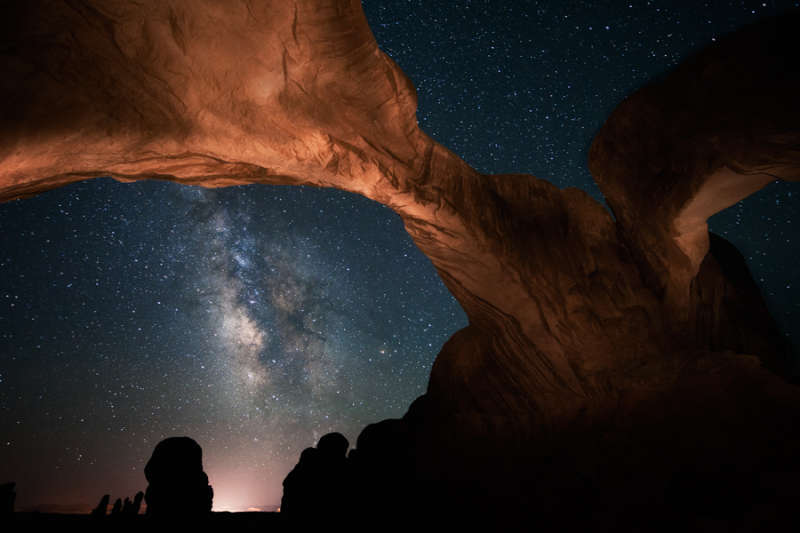
|
Credit & Copyright: Brad Goldpaint
(Goldpaint Photography)
Explanation:
How many arches can you count in the above image?
If you count both spans of the
Double Arch in the
Arches National Park
in
Utah,
USA, then two.
But since the
above
image was taken during a clear dark night, it caught a photogenic third arch
far in the distance -- that of the overreaching
Milky Way Galaxy.
Because we are situated in the midst of the
spiral Milky Way Galaxy, the band of the
central disk appears all around us.
The
sandstone arches of the
Double Arch were formed from
the erosion of falling water.
The larger arch rises over 30 meters above the
surrounding salt bed and
spans close to 50 meters across.
The dark silhouettes across the image bottom are sandstone
monoliths left over from silt-filled crevices in an evaporated 300 million year old
salty sea.
A dim flow created by light pollution from
Moab, Utah can also be seen
in the distance.
|
January February March April May June July August September October November December |
| |||||||||||||||||||||||||||||||||||||||||||||||||||||||
NASA Web Site Statements, Warnings, and Disclaimers
NASA Official: Jay Norris. Specific rights apply.
A service of: LHEA at NASA / GSFC
& Michigan Tech. U.
Based on Astronomy Picture
Of the Day
Publications with keywords: Milky Way
Publications with words: Milky Way
See also:
